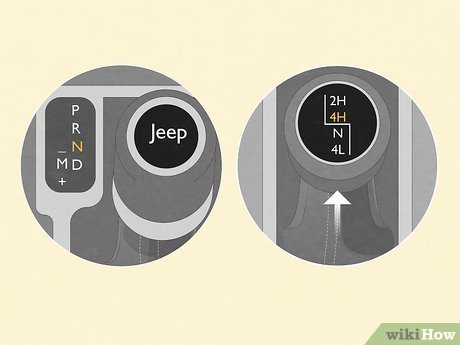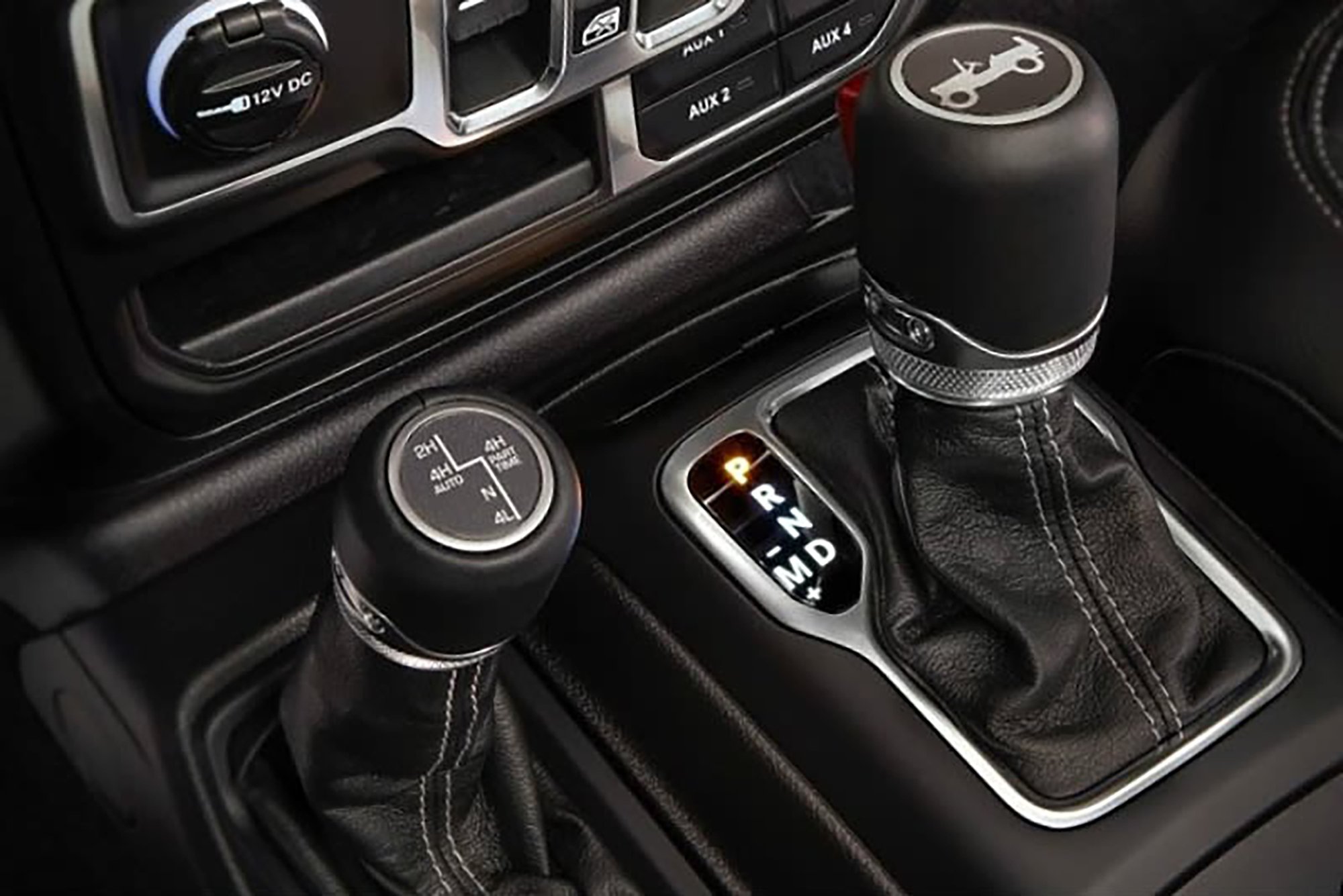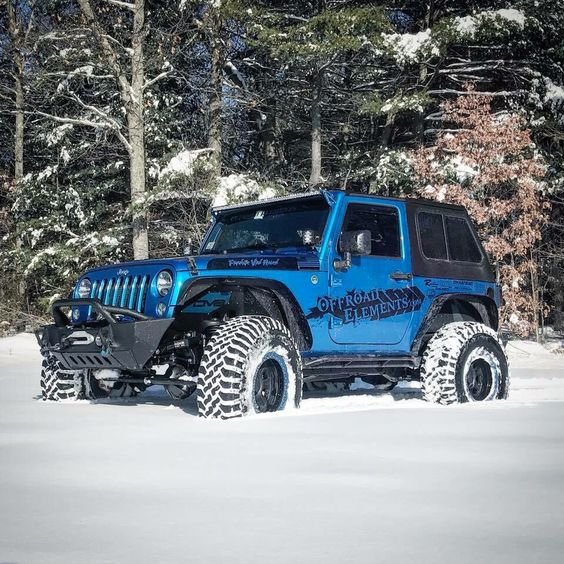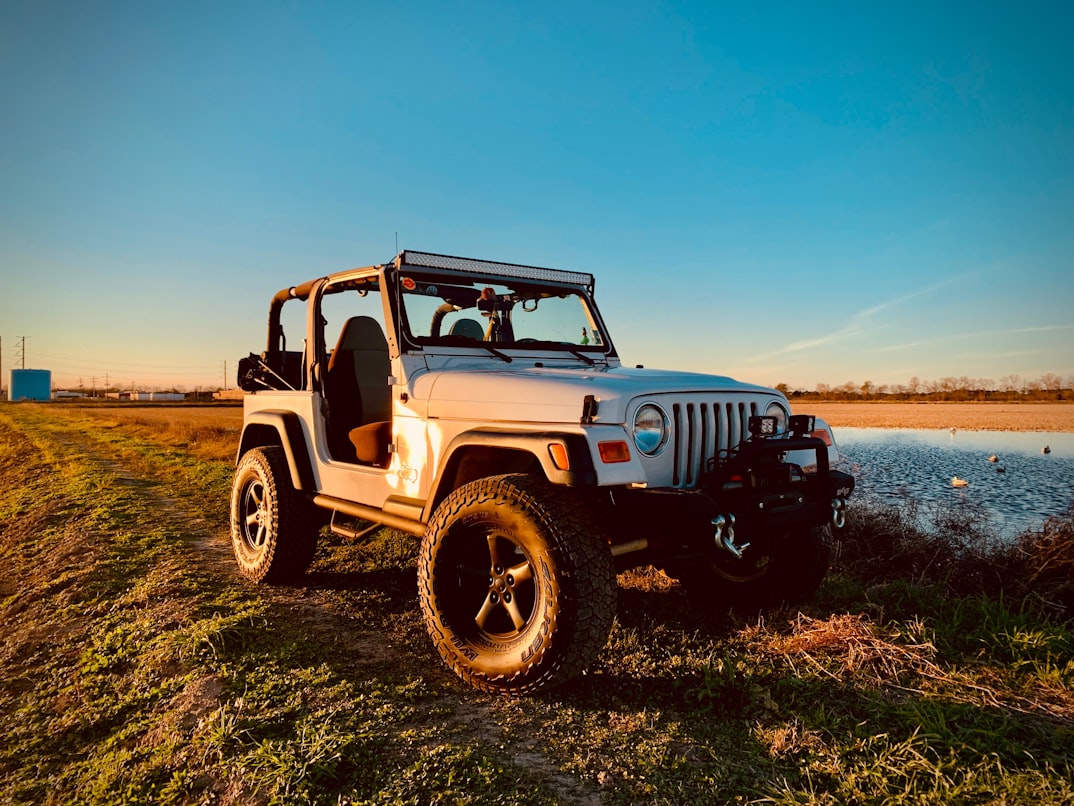
Have you ever found yourself stuck in mud or snow, wishing your Jeep could just power through? Knowing how to put your Jeep in 4-wheel drive is your ticket to conquering those tricky terrains.
In this guide, we’ll walk you through the simple steps to switch your Jeep into 4-wheel drive mode. Whether you’re planning an off-road adventure or just want to be prepared for unexpected road conditions, this skill is a game-changer. Imagine the confidence you’ll feel, knowing you can tackle any challenge the road throws at you.
Ready to unlock your Jeep’s full potential? Let’s dive in and get your wheels turning.

Credit: www.quadratec.com
Understanding 4 Wheel Drive
Engaging the 4-wheel drive in a Jeep involves shifting the transfer case lever or using a button. Ensure the Jeep is stationary or moving slowly. Follow the manual for precise instructions, as models may differ. Proper use enhances traction on challenging terrains.
Understanding 4 Wheel Drive If you’ve ever found yourself stuck in mud or snow, you know the value of 4 wheel drive. It’s the kind of feature that turns a challenging drive into an exciting adventure. But how does it all work? Let’s break it down so you can confidently handle any terrain.Basics Of 4 Wheel Drive
4 wheel drive, often abbreviated as 4WD, is a system that powers all four wheels of your vehicle simultaneously. This provides better traction, especially on rough or slippery surfaces. Imagine driving on a snowy road; with 4WD, you have more control and stability. Engaging 4WD is usually done through a lever or a button inside your Jeep. Some modern Jeeps even offer automatic systems that activate when needed. But knowing when and how to use it can make all the difference.Types Of 4 Wheel Drive Systems
There are several types of 4WD systems, each with its own features. Part-time 4WD is the most common. It lets you switch between two-wheel drive and four-wheel drive depending on the conditions. This is perfect for those who encounter varying terrains on their adventures. Full-time 4WD is always engaged, providing constant power to all wheels. This system is beneficial if you frequently drive on challenging surfaces. However, it may lead to increased fuel consumption. Automatic 4WD systems detect wheel slippage and engage 4WD as necessary. This can be convenient, as it allows you to focus on the road without worrying about manually switching modes. But, it’s essential to understand its limitations for optimal use. Have you ever wondered which system suits your driving style best? Understanding these systems can help you make informed decisions when navigating through different terrains. How do you think your driving experience might change with the right 4WD system?Preparing Your Jeep
Getting your Jeep ready for 4-wheel drive is important. Proper preparation ensures a smooth and safe off-road experience. Before engaging 4-wheel drive, check several key elements. This will help you avoid problems and enjoy a better ride. Let’s explore how you can prepare your Jeep efficiently.
Checking Vehicle Compatibility
Not all Jeeps have 4-wheel drive capabilities. First, confirm your vehicle supports 4-wheel drive. Look at the owner’s manual. It provides specific details about your model. Some Jeeps have automatic systems. Others require manual engagement. Understanding your Jeep’s system is crucial.
Inspecting The Terrain
Before you engage 4-wheel drive, inspect the terrain. Different surfaces need different driving techniques. Muddy paths and rocky trails require more traction. Snowy or icy roads need careful navigation. Knowing the terrain helps choose the right drive mode. It keeps you safe and prevents vehicle damage.
Engaging 4 Wheel Drive
Engaging your Jeep’s 4-wheel drive can be a game-changer for off-road adventures and navigating tough terrains. Whether you’re tackling muddy trails or snowy roads, knowing how to effectively engage your 4-wheel drive can enhance your driving experience and keep you safe. Ever wondered if your Jeep has manual or automatic systems for engaging 4-wheel drive? Let’s dive in and find out!
Manual Vs Automatic Systems
Jeep models come with different systems for engaging 4-wheel drive. Some have manual systems, where you physically shift a lever to activate it. Others have automatic systems, making it easier by simply pressing a button.
Manual systems give you more control. You can feel the gear shift and know exactly when you’re in 4-wheel drive. It’s like the satisfying click of a seatbelt—secure and reassuring.
Automatic systems are convenient. With just a push, you’re ready for the road ahead. They save time and effort, especially when you’re quickly moving from regular roads to rugged terrains.
Step-by-step Guide
Ready to engage your Jeep’s 4-wheel drive? Follow this simple guide:
- Stop the Vehicle:Ensure your Jeep is at a complete stop. This prevents grinding gears.
- Shift to Neutral:Put the transmission in neutral. This allows the gears to align correctly.
- Engage 4-Wheel Drive:For manual systems, pull the lever to the desired setting (4H or 4L). For automatic systems, press the 4-wheel drive button.
- Return to Drive:Shift back to drive or your preferred gear. You’re now ready to conquer those challenging roads!
Have you ever been stuck on a slippery hill, wishing you had engaged 4-wheel drive earlier? Remember, preparation is key. Knowing your Jeep’s system and following these steps can prevent stressful situations.
Does this seem simple or is there a part that confuses you? Understanding your Jeep’s system makes all the difference in handling unexpected road conditions. What’s your experience with switching to 4-wheel drive? Share your thoughts and let’s learn from each other!

Credit: www.offroadelements.com
Common Mistakes
Engaging the 4-wheel drive in your Jeep can be a thrilling experience, but it’s not without its pitfalls. Many drivers make simple mistakes that can lead to costly repairs or frustrating off-road experiences. Knowing these common mistakes can save you time, money, and a whole lot of headaches.
Avoiding Gear Grinding
One of the most frequent mistakes is rushing the shift into 4-wheel drive. You might be eager to hit the trails, but forcing the gears can lead to grinding. This is not only unpleasant but can also damage your Jeep’s transmission. Always ensure your vehicle is stopped or moving slowly before engaging the 4-wheel drive. Listen to your Jeep—if it feels like you’re forcing it, you probably are.
Take a moment to check your owner’s manual. It often provides specific instructions for your model. Have you ever felt the unmistakable crunch of gears grinding? It’s a sound you won’t forget, and one you should avoid.
Incorrect Terrain Usage
Another mistake is using 4-wheel drive on the wrong terrain. Not every situation calls for it. On dry pavement, engaging 4-wheel drive can lead to binding in the drivetrain. This can cause wear and tear faster than you’d expect. Use it primarily for off-road adventures or slippery conditions.
Consider where you’re driving: Are the roads icy? Is the trail muddy? Recognize when 4-wheel drive is necessary. Inappropriate usage can cause damage—something you want to steer clear of.
Have you ever questioned whether you needed 4-wheel drive at all? Being mindful of the terrain ensures you’re not putting unnecessary stress on your vehicle.
Maintaining Your Jeep
Keeping your Jeep in top condition is essential. Regular maintenance ensures reliability and safety. A well-maintained Jeep handles tough terrains better. Proper care extends its lifespan. Let’s explore key maintenance practices.
Routine Checks
Inspect your Jeep regularly. Look for any visible issues. Check fluid levels, like oil and coolant. Ensure they are at the recommended levels. Examine tire pressure often. This improves fuel efficiency and safety. Inspect brakes for wear. They should function smoothly.
Addressing Wear And Tear
Parts wear out over time. Replace worn-out components promptly. Pay attention to the suspension system. A well-functioning system provides a smooth ride. Monitor the battery’s health. Clean any corrosion on the terminals. Ensure lights are working properly. Visibility is crucial, especially at night.
Expert Tips
Switching a Jeep into 4-wheel drive can elevate your off-road experience. Expert tips make this process smooth and effective. Let’s explore how to enhance your Jeep’s capabilities while ensuring safety.
Enhancing Off-road Performance
Engage 4-wheel drive to tackle challenging terrains. This boosts traction and control. Select 4H for moderate trails. Choose 4L for steep, rocky paths. The right mode enhances grip and performance.
Understand your Jeep’s limits. Different models have distinct capabilities. Familiarize yourself with your vehicle’s features. This knowledge aids in navigating tricky landscapes.
Regular maintenance keeps the 4-wheel system optimal. Check fluid levels and mechanical parts. Well-maintained systems ensure reliability during off-road adventures.
Safety Precautions
Prioritize safety before engaging 4-wheel drive. Always wear seatbelts. Secure loose items inside the Jeep. Avoid distractions while driving.
Assess the terrain thoroughly. Identify potential hazards like rocks or mud. Plan your route with safety in mind.
Drive at a cautious speed. Rapid movements can cause loss of control. Slow and steady ensures safer maneuvering.
Keep communication tools handy. Inform someone of your off-road plans. This ensures help is available if needed.

Credit: www.freedomautosonline.com
Frequently Asked Questions
How To Switch From 2wd To 4wd Jeep Wrangler?
To switch from 2WD to 4WD in a Jeep Wrangler, slow down to 2-3 mph. Shift the transfer case lever to 4H for high range or 4L for low range. Ensure the vehicle is in neutral or park when shifting to 4L.
How Do You Change The Jeep Between 2h 4h And 4l?
To shift from 2H to 4H, slow down and move the transfer case lever. For 4L, stop the vehicle, shift to neutral, then move the lever to 4L. Follow the owner’s manual for specific instructions.
How Do I Put My Jeep In 4wd?
To engage 4WD in your Jeep, shift the transfer case lever or use the 4WD button. Ensure your Jeep is stationary or moving slowly. Consult your owner’s manual for specific instructions based on your model. Properly engaging 4WD enhances traction on slippery or rough terrains.
Can I Switch From 2h To 4h While Driving?
Yes, you can switch from 2H to 4H while driving, but ensure your speed is below 60 mph. This helps in maintaining control and safety. Always consult your vehicle’s manual for specific instructions and conditions. Regular practice ensures smooth transition without damaging your vehicle.
Conclusion
Activating 4-wheel drive in a Jeep enhances off-road capability. It’s essential for rough terrains. Start by stopping the vehicle completely. Shift the transfer case lever or button. Make sure it’s in 4H or 4L, depending on the need. Practice helps in mastering this skill.
Understanding your Jeep’s manual is crucial. Always check for smooth engagement. Listen for any unusual sounds. Safety is a priority. Proper use of 4-wheel drive ensures better control. Enjoy your adventures with confidence. Your Jeep is ready for the challenge ahead.
